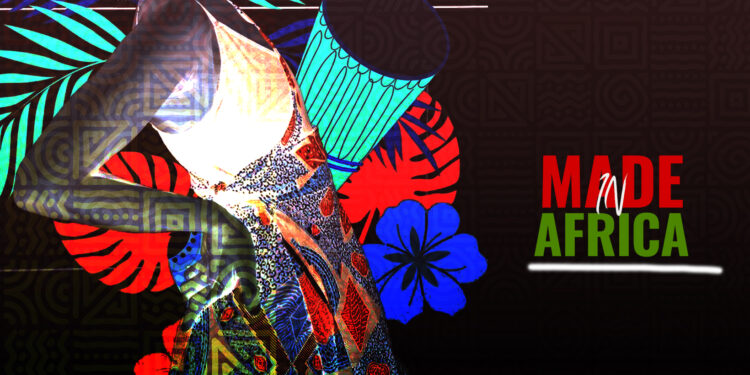‘Made in Africa’ gets a boost as cross-border trade gathers pace
According to the AfCFTA secretariat, twelve countries, including South Africa, have completed their legal formalities to enable trade to commence for thousands of product lines, including food and beverages, steel products, and equipment.
South Africa’s president recently amplified the call for “Made in Africa” at an event to promote intercontinental free trade. But he’s not the only one doing so. All over the continent, “Made in Africa” is becoming a rallying call.
Conrad Onyango, bird story agency
African leaders are beginning a push for increased consumer consciousness of ‘Made in Africa’ products as cross-border trade opens new opportunities for economic growth.
Inaugurating South Africa’s first trade shipments under the African Continental Free Trade Area (AfCFTA), President Cyril Ramaphosa urged over 12 African trade ministers attending the 13th AfCFTA Council of Ministers meeting in Durban, to bolden their push for trade in African goods.
President Ramaphosa personally emphasized his interest in knowing where everything he uses is made.
“I have started looking at everything that I either wear or pick up, I always want to know where it has been made,” Ramaphosa said.
“The products that we trade amongst ourselves must truly be ‘Made in Africa’ and let us focus on that.”
Ramaphosa said that modalities for the trade in goods have begun moving faster on the continent.
“We therefore need to put more effort into building African champions in finance, retail and telecommunications, and in expanding tourism between African countries where Africans can move around and pride themselves in buying things that are made by other Africans,” he said.
“That is the only way in which our economies will grow faster and sustainably.”
The consignment shipped to Kenya comprised of machinery, agricultural products and electronics including refrigerators traded under the Guided Trade Initiative.
In return, Kenya committed to deliver tea, coffee, fruits, vegetables and other products in the coming weeks to spur trade between the two countries.
“We are beginning to see the changing direction of the level of Intra-African trade which has been very low,” Rebecca Miano Cabinet Secretary for Investments, Trade and Industry of Kenya, said.
South Africa has become the first among the four Southern African Customs Union (SACU) countries to initiate its preferential trade exports under AfCFTA’s second Guided Trade Initiative.
According to recent reports, intra-Africa exports account for only 16% of Africa’s total exports, which is significantly lower than the percentages in Asia (55%), North America (49%), or the European Union (63%).
Data by a think tank, Trade Law Centre NPC (tralac) shows Intra-Africa trade has grown from US$98 billion in 2013 to US$102 billion in 2022.
Recent moves to ease visa restrictions is seeing improved inter-Africa travel, too.
The latest official arrival figures by Statistics South Africa show Kenyan arrivals surging 99% to 42,403 in 2023 compared to 2022,
“Kenya’s remarkable performance can be attributed to the strategic decision by government to simplify the visa regime in 2023 as well as targeted and effective insights-driven marketing campaigns” said South Africa’s Minister of Tourism, Patricia de Lille in a statement.
Kenyans have historically flown to Dubai to shop and vacation.
South Africa welcomed 6.4 million visitors from the rest of the African continent between January and December 2023 – 75.6% of all arrivals. African tourists are now regular visitors to destinations like Table Mountain and Cape Town’s V&A Waterfront, as well as Sandton in Johannesburg.
When it comes to “Made in Africa” a significant trend is also silently taking place in Africa’s auto industry, according to the South African president.
According to Ramaphosa, the country’s automotive companies are sourcing leather car seats from neighbouring Lesotho and wiring harnesses from Botswana, with the result that thousands of job opportunities are opening up in those countries.
South Africa’s auto industry, which produces vehicles for both the local and export markets, also sources copper wire from Zambia, rubber from Cote d’Ivoire, Nigeria, Malawi, Ghana and Cameroon, and steering wheel components from Tunisia.
“These inputs alone accounted for more than US$200 million worth of products traded among African countries and the scope to do more is available to us,” said Ramaphosa.
While South Africa has for years promoted its products with a “Proudly South African” logo, Kenya, too, has a locally-focused initiative, called “Buy Kenya, Build Kenya” to promote the purchase of goods and services produced locally. This initiative aims to instil a sense of patriotism among Kenyans and prioritize the use of Kenyan products to strengthen its domestic market.
All these rising activities are playing a significant role in boosting prospects of intra-Africa trade under the Africa Continental Free Trade Area (AfCFTA).
“But it requires bold rules of origin. For every one percent of extra African content, there is an opportunity for a factory or mine based on the continent to supply the products,” said Ramaphosa.
African trade ministers have been working on finalizing the rules of origin for what can be considered an African product. As of now, 92% of the products traded between nations have been finalized, according to the South African president.
Algeria, which signed on to AfCFTA in 2021. recently joined the Guided Trade Initiative, while Kenya was among the countries involved in the initial pilot phase and is currently actively engaged in the initiative, along with other countries such as Cameroon, Egypt, Ghana, Mauritius, Rwanda, Tanzania, and Tunisia.
According to the AfCFTA secretariat, twelve countries, including South Africa, have completed their legal formalities to enable trade to commence for thousands of product lines, including food and beverages, steel products, and equipment.
bird story agency


